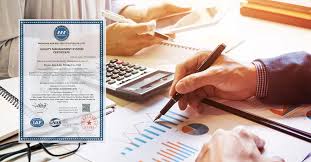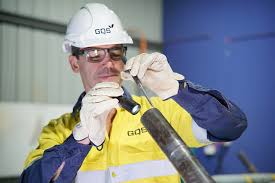Ensuring Quality Control: The Importance of Product Inspection
Product inspection is a crucial aspect of quality control in the manufacturing industry. It involves examining and testing products to ensure they meet specific standards and regulations. The importance of product inspection cannot be overstated, as it plays a vital role in identifying and rectifying any defects or deviations in the manufacturing process. This article will delve into the significance of product inspection in ensuring quality control and why it is essential for businesses to prioritize this process.
Ensuring Quality Control: The Importance of Product Inspection is crucial for businesses to maintain high standards and meet customer expectations. Product inspection helps to identify and rectify any defects or issues before the products reach the customers. This helps in preventing costly recalls, protecting brand reputation, and ensuring customer satisfaction. Product inspection also helps in adhering to regulatory standards and industry requirements, ultimately leading to improved product quality and reduced liabilities for the business. Overall, product inspection plays a vital role in maintaining quality control and driving business success.
The importance of product inspection in ensuring quality control cannot be overstated. It is a critical step in the production process that helps identify and mitigate potential issues before products reach the end consumer. Proper product inspection can prevent faulty or substandard items from leaving the production line, thereby reducing the likelihood of product recalls, protecting brand reputation, and ensuring customer satisfaction. Furthermore, effective product inspection is essential for businesses to comply with regulatory standards and industry requirements, which, in turn, minimizes liabilities and legal issues. Ultimately, product inspection plays a pivotal role in upholding consistent quality, which is imperative for customer retention and sustained business success.
Why Product Inspection is Essential for Manufacturing Quality Control

Product inspection is essential for manufacturing quality control because it helps to ensure that products meet the required standards and specifications. By conducting inspections at various stages of the manufacturing process, potential defects and issues can be identified and rectified before the final product is released to the market. This helps to minimize the risk of producing faulty or substandard products, which can result in costly recalls, reputation damage, and potential legal issues. Additionally, product inspection helps to maintain consistency and uniformity in product quality, ultimately leading to higher customer satisfaction and loyalty. Overall, product inspection is a critical component of manufacturing quality control that helps to uphold the reputation and integrity of a brand.
The Key Benefits of Implementing a Product Inspection System

1. Quality control: A product inspection system helps in maintaining high product quality by identifying and rejecting defective items before they reach the market. 2. Cost savings: By catching and addressing defects early in the production process, companies can avoid costly recalls, rework, and potential customer dissatisfaction. 3. Compliance: Product inspection systems assist in ensuring that products meet regulatory requirements, industry standards, and safety regulations, reducing the risk of non-compliance penalties. 4. Customer satisfaction: Consistently delivering high-quality products to customers can lead to increased trust, loyalty, and repeat business. 5. Data collection and analysis: These systems often collect data during inspection, enabling companies to analyze production trends, identify root causes of defects, and implement process improvements. 6. Competitive advantage: Having a reliable product inspection system in place may distinguish a company from its competitors by showcasing a commitment to quality and safety.
Understanding the Role of Product Inspection in Supply Chain Management
third party inspection services

Product Inspection in Supply Chain Management is a crucial process that ensures the quality and safety of products before they reach the end consumer. It involves inspecting products at various stages of the supply chain, including during manufacturing, packaging, and transportation. By conducting product inspections, companies can identify and address any issues or defects early on, reducing the risk of costly product recalls or customer complaints. This helps in maintaining the overall quality of products and building a positive brand reputation. Product inspection also plays a key role in compliance with regulatory standards and industry requirements. It helps companies ensure that their products meet all necessary safety and quality standards, minimizing the risk of non-compliance and potential legal issues. In addition, product inspection can provide valuable data and insights for supply chain optimization. By monitoring and analyzing inspection results, companies can identify trends, areas for improvement, and potential risks in their supply chain, allowing them to make informed decisions and implement necessary changes to enhance efficiency and performance. Overall, product inspection is an essential component of supply chain management, contributing to the delivery of high-quality products to consumers while also minimizing risks and maximizing operational efficiency.
Common Technologies Used in Product Inspection Processes

Product inspection processes commonly use a range of technologies to ensure the quality and safety of goods. Some of the most common technologies include: 1. Visual inspection systems: These systems use cameras and specialized software to detect defects in products such as missing components, surface defects, and incorrect labeling. 2. X-ray inspection: X-ray systems are used to detect contaminants, such as metal, glass, or stone, in food products and pharmaceuticals. They can also be used to inspect the integrity of sealed products. 3. Metal detection: Metal detectors are commonly used to identify metal contaminants in food products and other items. They are vital for ensuring product safety and regulatory compliance. 4. Checkweighers: These systems are used to ensure that products have the correct weight. They can help identify under or overweight products that may not meet quality standards. 5. Barcode and RFID scanning: These technologies are used to track and trace products throughout the production and distribution process. They can help ensure the accuracy and reliability of product information and prevent counterfeit items from entering the market. 6. Thermal imaging: Thermal cameras can detect temperature variations in products, which can indicate potential quality issues or defects. Overall, these technologies play a crucial role in improving the efficiency and effectiveness of product inspection processes, helping companies maintain high-quality standards and comply with regulatory requirements.
How to Develop an Effective Product Inspection Plan for Your Business<
third party inspection agency/h2>
Developing an effective product inspection plan for your business involves several key steps. Firstly, you should clearly define the standards and requirements for your products, ensuring that all relevant regulations and industry standards are met. Next, you will need to establish a systematic process for inspecting your products, incorporating both visual checks and testing methods as needed. This process should be tailored to suit the specific characteristics and potential risks associated with your products. It is also important to designate qualified and trained personnel to carry out the inspection process, and to provide them with the necessary resources and tools to perform their tasks effectively. Regular monitoring and evaluation of the inspection process should also be integrated into your plan, to identify any potential areas for improvement and ensure ongoing compliance with quality standards. Additionally, you should consider the incorporation of advanced technologies and automated systems for product inspection, to enhance efficiency and accuracy. By following these steps and continuously refining your product inspection plan, you can ensure the consistent quality and safety of your products, thereby enhancing customer satisfaction and upholding your brand reputation.
The Importance of Training Employees for Product Inspection Procedures
Training employees for product inspection procedures is crucial for ensuring the quality and safety of products. Proper training provides employees with the knowledge and skills they need to accurately inspect products for defects or non-conformities. This can help prevent faulty or substandard products from reaching customers, reducing the risk of recalls and negative impacts on the company's reputation. Additionally, well-trained employees can also help improve production efficiency and reduce waste by identifying and addressing issues early in the manufacturing process. Ultimately, investing in training for product inspection procedures can lead to improved customer satisfaction, reduced costs, and a more competitive position in the market.
Product Inspection Best Practices for Ensuring Consumer Safety
Product inspection best practices for ensuring consumer safety include thorough visual inspection for any physical defects or damage, checking for correct labeling and packaging, verifying safety certification and compliance with industry standards, and conducting random sample testing for quality and safety. It is also important to have a well-documented inspection process and to follow a strict schedule for regular inspections. In addition, proper training for inspectors and clear communication with suppliers are crucial for a successful product inspection process. All these measures are aimed at preventing any potential risks to consumer safety and ensuring that only safe and high-quality products reach the market.
The Future of Product Inspection: Trends and Innovations to Watch
The Future of Product Inspection: Trends and Innovations to Watch is an informative article that highlights the emerging trends and technologies in product inspection. It covers topics such as the use of artificial intelligence and machine learning for automated inspections, the integration of advanced sensors and imaging technologies for more precise and accurate inspections, and the adoption of blockchain and other digital technologies for traceability and transparency in supply chains. The article also discusses the potential impact of these trends on industries such as food and beverage, pharmaceuticals, and manufacturing. Overall, it provides valuable insights into the future of product inspection and the innovative solutions that are shaping the industry.